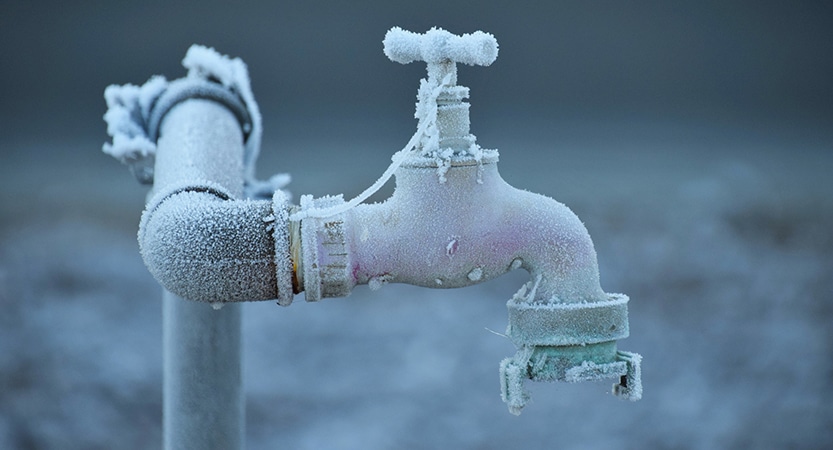Tips to Safeguard Pipes from Freezing: Specialist Advice
Tips to Safeguard Pipes from Freezing: Specialist Advice
Blog Article
Were you hunting for info on How to Prevent Your Pipes From Freezing?

Winter can ruin your pipes, specifically by freezing pipelines. Right here's exactly how to avoid it from happening and what to do if it does.
Introduction
As temperature levels decline, the danger of frozen pipes rises, possibly bring about pricey repair services and water damage. Understanding just how to avoid frozen pipelines is important for homeowners in cool environments.
Prevention Tips
Shielding susceptible pipelines
Wrap pipelines in insulation sleeves or use warmth tape to safeguard them from freezing temperature levels. Concentrate on pipelines in unheated or exterior locations of the home.
Home heating techniques
Maintain interior areas properly heated up, particularly areas with plumbing. Open up closet doors to permit cozy air to distribute around pipelines under sinks.
Exactly how to determine frozen pipes
Look for lowered water circulation from taps, unusual smells or noises from pipes, and visible frost on exposed pipelines.
Long-Term Solutions
Structural changes
Consider rerouting pipelines far from exterior walls or unheated locations. Include additional insulation to attic rooms, cellars, and crawl spaces.
Updating insulation
Purchase high-grade insulation for pipes, attics, and wall surfaces. Proper insulation helps preserve constant temperatures and lowers the threat of frozen pipes.
Shielding Outside Plumbing
Yard hose pipes and exterior faucets
Separate and drain yard hose pipes prior to winter season. Mount frost-proof spigots or cover outside faucets with protected caps.
Recognizing Frozen Pipes
What triggers pipelines to ice up?
Pipes freeze when revealed to temperatures below 32 ° F (0 ° C) for prolonged durations. As water inside the pipes freezes, it broadens, taxing the pipeline walls and potentially causing them to rupture.
Dangers and problems
Icy pipelines can bring about water disturbances, home damage, and pricey repairs. Burst pipelines can flooding homes and create substantial architectural damages.
Indications of Frozen Pipeline
Identifying icy pipelines early can stop them from bursting.
What to Do If Your Pipelines Freeze
Immediate activities to take
If you suspect frozen pipelines, keep faucets available to alleviate stress as the ice thaws. Utilize a hairdryer or towels soaked in warm water to thaw pipes slowly.
Final thought
Preventing frozen pipelines requires proactive measures and fast reactions. By recognizing the reasons, signs, and safety nets, homeowners can secure their pipes during cold weather.
6 Proven Ways to Prevent Frozen Pipes and Protect Your Home
Disconnect and Drain Garden Hoses
Before winter arrives, start by disconnecting your garden hoses and draining any remaining water. Close the shut-off valves that supply outdoor hose bibs and leave the outdoor faucet open to allow any residual water to drain. For extra protection, consider using faucet covers throughout the colder months. It’s also important to drain water from any sprinkler supply lines following the manufacturer’s directions.
Insulate Exposed Pipes
Insulating your pipes is an effective way to prevent freezing. Pipe insulation is readily available at home improvement stores and is relatively inexpensive. Pay close attention to pipes in unheated areas such as the attic, basement, crawl spaces, or garage. Apply foam insulation generously to create a buffer against the cold. You can also wrap your pipes in heat tape or thermostat-controlled heat cables for added warmth.
Seal Air Leaks
Inspect your home for any cracks or openings that could let in cold air. Seal any holes around the piping in interior or exterior walls, as well as the sill plates where your home rests on its foundation. Additionally, make sure to keep your garage door closed unless you’re entering or exiting. Leaving it open creates a significant air leak that can lead to frozen pipes.
Allow Warm Air Circulation
During cold snaps, it’s essential to allow warm air to circulate evenly throughout your home. Leave interior doors ajar to promote better airflow. Open kitchen and bathroom cabinets to help distribute heat consistently around the rooms. If you have small children or pets, be sure to remove any household chemicals or potentially harmful cleaners from open cabinets for safety.
Let Faucets Drip
A small trickle of water can make a big difference in preventing ice formation inside your pipes. When temperatures drop significantly, start a drip of water from all faucets served by exposed pipes. This continuous flow helps prevent the water from freezing. Additionally, running a few faucets slightly can relieve pressure inside the pipes, reducing the chances of a rupture if the water inside does freeze.
https://choateshvac.com/6-proven-ways-to-prevent-frozen-pipes-and-protect-your-home/

I stumbled upon that article on How To Avoid Freezing Pipes while looking around the internet. Loved our posting? Please quickly share it. Help others discover it. Thank you so much for your time invested reading it.
Information Report this page